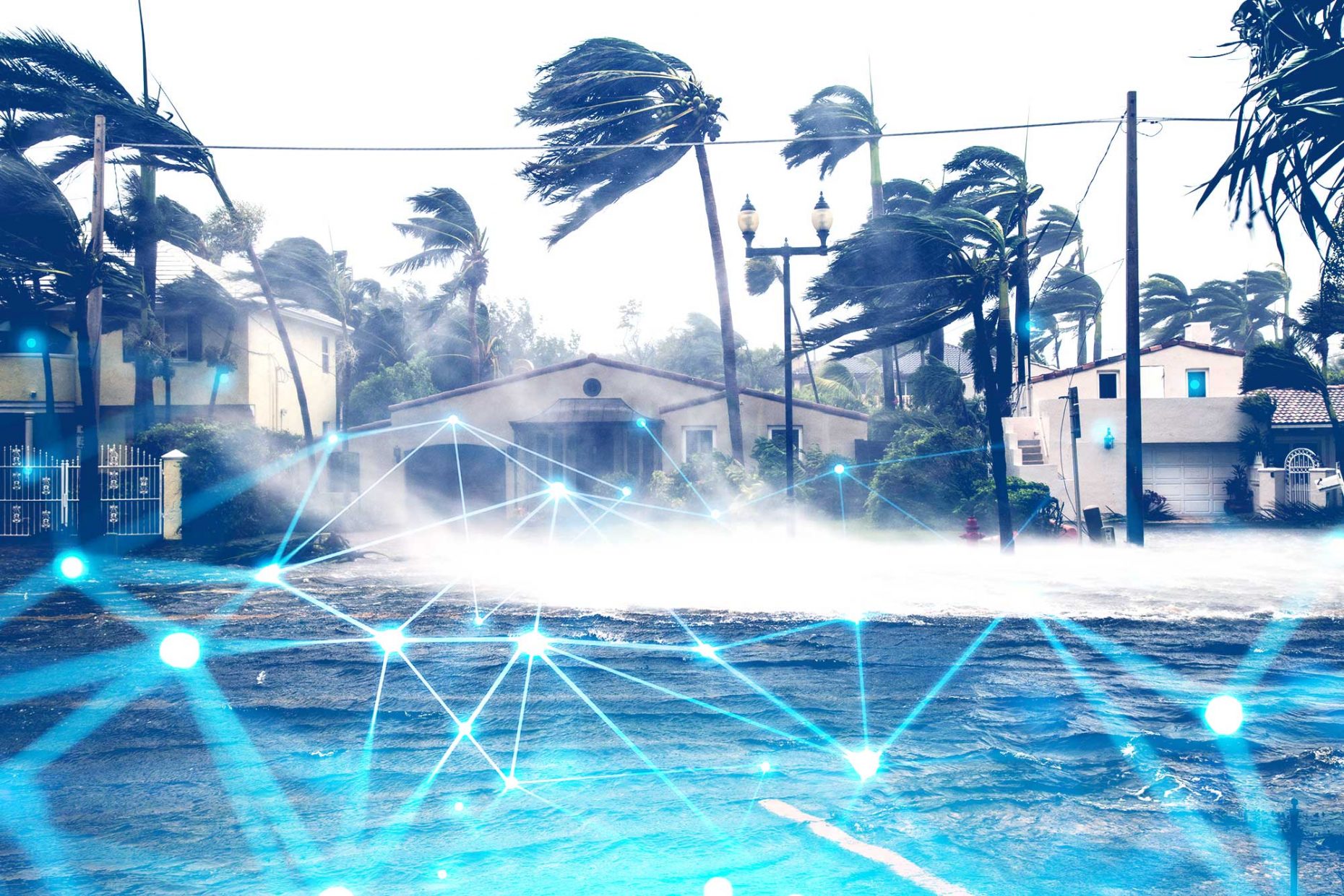As the planet faces increasing extreme weather events, AI and machine learning give climate experts new opportunities to efficiently analyze and organize data to better inform their work
Uncertainty. For me, that one word sums up the challenges facing climate change experts around the world. This past summer alone, climate change analysts have had the nearly impossible task of projecting future weather events amid record-breaking temperatures, violent hurricanes, and devastating floods (to name only a few) that have impacted people’s health, homes, and livelihoods – as well as threatened wildlife and biodiversity.
As we heard at the 2021 United Nations Climate Change Conference (COP26) last year, these extreme and unpredictable events are on track to get worse. Amid the uncertainty, how can climate change analysts make future climate change projections? Without the proper information, how can they devise an appropriate disaster response after a terrible hurricane that destroys a community? How do they improve communities’ responses to climate hazards, like air pollution or extreme temperatures?
The answer lies in two technological advancements that finally give experts some certainty: artificial intelligence (AI) and machine learning. These valuable tools can be used to distill raw data into actionable information, optimize complex systems, and improve future projections – helping to inform important decisions and even fight climate change.
This summer, I had the honour of representing NovaceneAI at the first-ever Climate Change AI (CCAI) summer school where I familiarized myself with different machine learning approaches that can be used to tackle climate change problems.
Confronting Climate Change Through Collaboration
NovaceneAI was selected from 1,100 applications in the highly competitive summer school program, which accepted only 70 participants from over 30 countries. I was proud to represent our company, and provide our AI expertise, as I learned with other leading experts in different fields throughout the course.
At the beginning of the program, industry leaders and academic researchers spoke about the importance of collaboration among different sectors as the key to helping climate change leaders solve the crisis. These keynote lectures were led by prominent leaders in the field including IBM, Microsoft, ETH Zurich, UC Berkeley and Stanford University. We discussed the importance of interdisciplinary collaboration, and the power of machine learning in different subject areas in climate change – including forests, transportation, and operating systems. We also saw examples of how AI can interpret NASA data, which helps researchers identify patterns and monitor changes such as decreasing seas and icecaps – and allows climate scientists to analyze and monitor changes to project future risks to the planet.
I later worked in a multidisciplinary group where we tested our theory that natural language processing (NLP), the area of AI focused on the analysis of text data, can be used to analyze tweets to help better understand people’s responses in the aftermath of a major hurricane.
Solving Problems: How AI Can Help Climate Change Experts
As part of the project, we used NLP to analyze tweets during Hurricane Sandy in 2012, Hurricane Matthew in 2016, Hurricane Harvey in 2017, Hurricane Michael in 2018, and Hurricane Dorian in 2019. While each of these hurricanes affected different regions of the United States, we were curious about how people’s social media posts about the hurricanes evolved over these seven years. We further examined differences in vulnerability to hurricanes, people’s sentiments in response to government interventions, and whether people attribute hurricanes to climate change more frequently over time. For example, we identified keywords of topics including “(un)prepared”, “plan,” and “evacuation” which allowed us to explore trends in their prevalence over time and between different hazardous events.
Ultimately, we found that Twitter analysis can support climate experts in many ways. Our findings contribute to a better understanding of how affected people respond to hurricanes, what they might need to respond more effectively, and who is most vulnerable – all information that can be integrated into climate education, disaster risk communication, disaster response, and adaptation plans.
NLP techniques can also help climate change analysists identify topics that should be prioritized in plans – as well as help them identify future risks and vulnerabilities, and make future climate change projections. In addition, NLP helps extract knowledge from text in new ways – helping climate change experts understand climate change’s impacts and previously unidentified contributors.
How Novacene Can Help
Novacene can help researchers analyze data taken after a disaster (such as tweets from people experiencing a major hurricane) to help climate experts gain a better understanding of the risks and vulnerabilities that arise during a significant weather event – which can help inform future disaster plans. As Novacene’s data scientist, I was proud that my team and I were able to illustrate the value of analyzing tweets to better understand climate change’s effects on people, which can better inform adaptation strategies.
Overall, the CCAI program highlighted a very important need in the climate change community: certainty and clarity. This need can be addressed through tight-knit collaboration between climate risk experts and data scientists towards the development of effective projection systems. This collaboration, however essential, can be difficult; climate experts and data scientists come from very different backgrounds and often lack a common language to communicate with precision across the expertise divide. Tools like the NovaceneAI Platform can help experts of diverse backgrounds collaborate in a levelled playing field. These tools provide an environment where teams can point to the nuance hidden in the challenges they are tackling while they collaborate towards a common goal. For tangible examples of this collaborative experience, watch how the NovaceneAI Platform fosters collaboration between domain experts and data scientists.
AI can help analysts focus on climate change projections into the future. The technology can uncover fast and accurate insight that can inform disaster response plans, support climate education, and help develop disaster risk communication, disaster responses and adaptation plans. I am personally convinced that AI can be an effective tool in bringing certainty in our fight against climate change.


